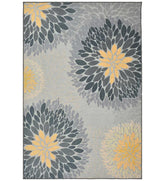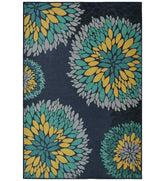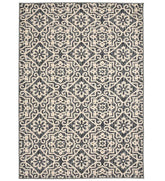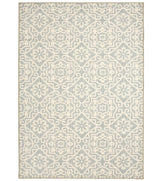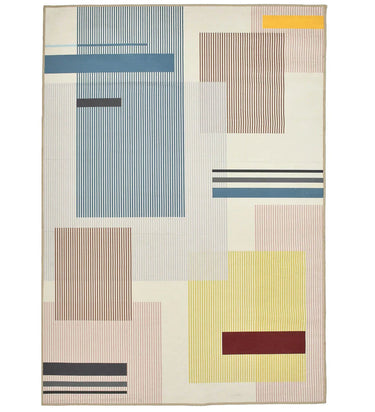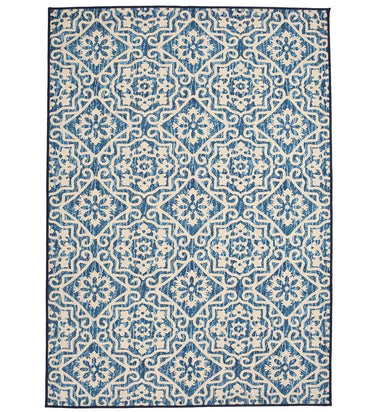Rug shedding is one of the most common issues rug owners face, especially with new rugs.
Whether you're dealing with a wool rug shedding like crazy or trying to understand why your synthetic rug is leaving fibers behind, this guide provides a detailed, expert-backed explanation.
We will explore the root causes by understanding the main purpose of materials and construction. Also, we will provide you with effective solutions to stop rug shedding effectively.
What Is Rug Shedding?
The reason for rug shedding refers to the release of loose fibers from the surface of a rug; that's why it always sticks to clothes or builds up on floors.
While it is often a temporary phase in new rugs, persistent shedding can signal underlying issues in the rug's material or manufacturing.
Why Do Rugs Shed? Understanding the Core Causes
The two primary causes of rug shedding are:
1. Rug Material Quality:
Not all fibers are created equal. Here's how material type affects shedding:
Wool Rugs:
-
Do wool rugs always shed? Yes, especially initially.
- Why wool sheds: Lower-quality wool contains fewer amounts of fibres and more breakage. These fragments dislodge easily from the rug surface.
- Wool from lowland sheep is typically coarser and shorter. To bind these short pieces into yarn, manufacturers Usually use adhesives, which degrade over time.
- Wool from high-altitude sheep, rich in lanolin and longer in length, tends to shed less and last longer.
Synthetic Rugs (Polyester, Polypropylene, Nylon):
- So basically these materials are made from petroleum-based fibers. While often marketed as low-shed, poor-quality synthetics may still shed due to fiber breakage or degradation over time.
Jute and Natural Fiber Rugs:
Jute rugs shed because the plant fibers break down quickly under friction. Jute shedding is harder to manage and tends to worsen over time.
2. Construction Method:
You should know that the rug’s construction significantly influences how much it sheds. Here we will break this down:
For Hand-Knotted Rugs:
- These are made with individual knots, and this is the reason why these rugs are the most durable and lowest shedding rugs.
- Every single knot is integral to the overall structure, meaning fibers don't easily loosen at all.
Hand-Woven Rugs:
- Similar in durability to hand-knotted rugs. The weft and warp threads are tightly woven, minimizing shedding.
Tufted Rugs (Hand or Machine-Tufted):
- Made by punching tufts of yarn into a backing, then glued into place.
- Most tufted rugs shed excessively due to poor-quality wool, which is not valuable, and adhesive breakdown.
- Often marketed as "affordable luxury", but come with trade-offs in longevity and cleanliness.
Machine-Made Rugs:
- Fast production using synthetic yarns. While durable, fibre shedding is most common in low-cost synthetic materials.
Power-Loomed Rugs:
- Often made with heat-set polypropylene or polyester. These rugs shed less when constructed well.
How Long Do Wool Rugs Shed?
- Initial phase: High shedding of wool is common in the first 3–6 months.
- Ongoing shedding: If shedding continues beyond a year, it happens because of the poor wool quality or tufted construction.
- The question is, how do you deal with wool rug shedding? First of all, regular vacuuming and fiber management can surely help reduce this over time.
How to Stop a Rug from Shedding: Pro Tips and Strategies:
1. Always Remember to Vacuum Smartly:
- Use suction only (no beater bar).
- Vacuum with the pile direction, not against it.
- Limit vacuuming to 1–2 times a week for wool rugs.
2. Keep in mind to use a Rug Pad:
- High-quality pads absorb impact, reduce friction, and extend rug life.
- They protect the pile from compression and unravelling.
3. Honestly speaking:
- Try a Wool Rug Rake or Brush.
- These tools gently lift loose fibers and reduce surface shedding.
- Especially They are very useful for thick wool or shag rugs.
4. Apply Rug Shedding Spray:
- Commercial rug shedding sprays coat fibers to reduce fraying.
- Before jumping to further steps Test on a small area first to ensure no discoloration.
- Look for formulas designed for wool rug shedding.
5. Limit your Foot Traffic:
- Just to clarify, move your shedding rug to a low-traffic area temporarily.
- Key Tips: Avoid placing under rolling chairs or heavy furniture.
6. Avoid Aggressive Cleaning:
- All we know is not to deep clean too frequently.
- Remember this thing: Avoid steam or hot water treatments, which can weaken fibers.
How to Stop Wool Rug from Shedding: Special Considerations
If your wool rug is shedding like crazy, consider:
- Whether it's hand-knotted vs tufted.
- How often it's vacuumed.
- If environmental factors (like dry air or humidity) are impacting the wool fibers.
- Switching to a wool rug shedding spray after regular brushing.
Rugs That Don’t Shed: What to Buy Instead
Looking for low-maintenance options? Choose these:
- Hand-knotted wool rugs are of the best quality and have the least shedding.
- Flatweave kilims: Durable and tightly woven.
- Power-loomed rugs with heat-set polypropylene: good synthetic choice.
- Bamboo silk blends: Natural, low-shed option.
- No shed rugs explicitly labeled and tested by manufacturers.
Avoid:
- Most tufted rugs.
- Poor-quality jute or seagrass rugs.
- Budget polyester rugs without proper heat-setting.
FAQ: Common Rug Shedding Questions Answered
Why is my rug shedding so much?
Your rug may be shedding. Because of the poor-quality wool, synthetic fiber breakage, or glue failure in tufted constructions. Knowing the material and construction method is key to figuring out the reason for shedding.
Do all wool rugs shed?
Most wool rugs shed initially. However, high-quality hand-knotted or hand-woven wool rugs shed far less than tufted or machine-made ones.
Can I stop a wool rug from shedding completely?
You can appreciably reduce it with proper care and regular vacuuming, use of a rug rake, and applying a shedding spray. However, complete cessation depends on rug quality.
Will rug shedding stop eventually?
Yes, for high-quality rugs. It typically reduces over time. For tufted or glued rugs, shedding may persist until the rug wears out.
How do I get rid of rug shedding fast?
Trying to get rid of rug shedding for good? Always use a combination of vacuuming, brushing, spraying, and minimizing foot traffic. Always start with gentle methods to avoid damaging the fibers.
Are there natural rugs that don’t shed?
Yes. As we know, flatweave rugs made of cotton, bamboo silk, or wool blends are typically low-shed options. Always check the manufacturing method.
Final Thoughts: How to Deal With Rug Shedding Like a Pro
Just remember. Rug shedding isn’t always a sign of poor quality, but it is a clear sign you need to understand your rug better.
If you know whether you have a hand-knotted wool masterpiece or a mass-produced tufted rug, you’ll know what to expect and how to maintain it.
For long-term results:
- Invest in hand-knotted, hand-woven, or power-loomed rugs from trusted brands.
- Use proper cleaning tools and sprays to control shedding.
- Avoid high-shedding materials like cheap synthetics and jute if low maintenance is a priority.
Treat your rug right from the start, and it will shed less, look better, and last longer.
By Louisa Parker (Mannat Rugs)


